How to Choose the Right Buddha Statue for Home?
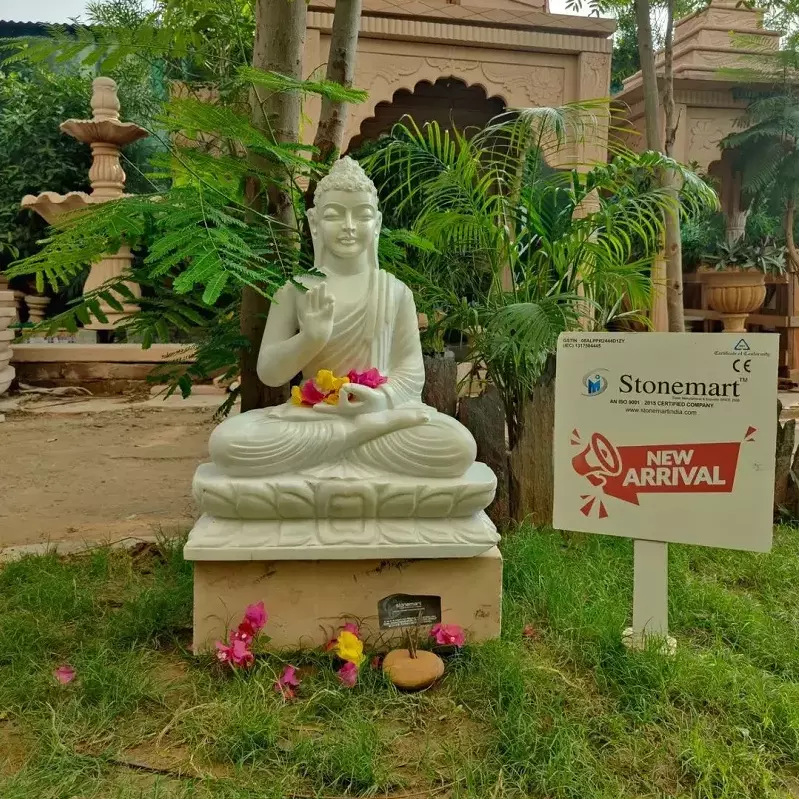
No one can deny the fact that peace is a state of mind and it is directly associated with the energy of the space that we dwell in. A Buddha stone statue for home is one of the most reliable scions to help bring in peace and harmony. Possessing a peaceful home where one can get a good night’s sleep is a universal desire.
Now, the obvious question that arises on the mind is where to keep a Buddha statue in the house and why? There are only a few people who actually realizes the significance of various Buddha poses and where would be the most perfect place for them to make them perfectly aligned with the principles of home Vastu. That is why, it is imperative for us to realize the rules and principles of selecting the right Buddha statue for planned home decor aesthetics as per Vastu.
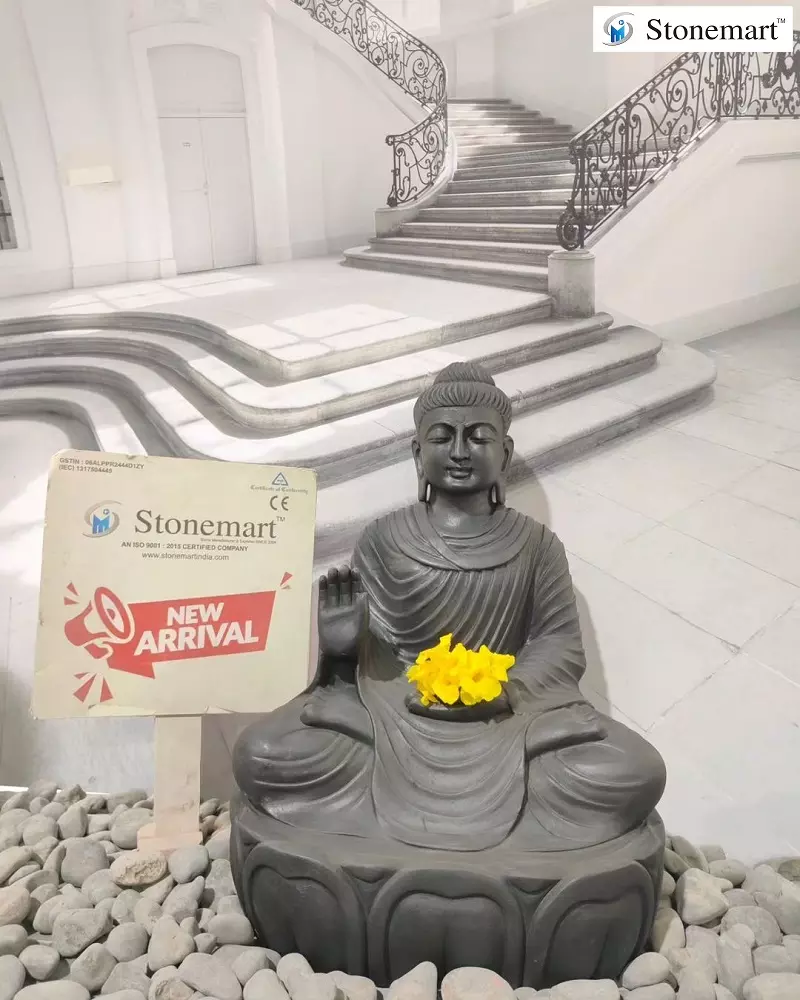
For the sake of helping you select the right Buddha statue for indoor, allow us to throw some light upon certain rules of Buddha placement that we advise you to keep in mind.
MUST READ: Is it OK to Have a Buddha Statue in the Garden?
Rule #1: Keep the Blessing Buddha at the Home Entrance
Popularly known as Abhaya Mudra Buddha Statue, here the lord is seated upon a throne with one hand raised to the chest level in a blessing mudra full of confidence. It is a mudra of protection and the raised hand in aashirwad mudra as a shield to keep the negative vibes out of the vicinity. It helps in overcoming fear and be at peace with oneself. Keep a stone Buddha idol in this mudra at the main entrance to keep the disruptive elements at bay.
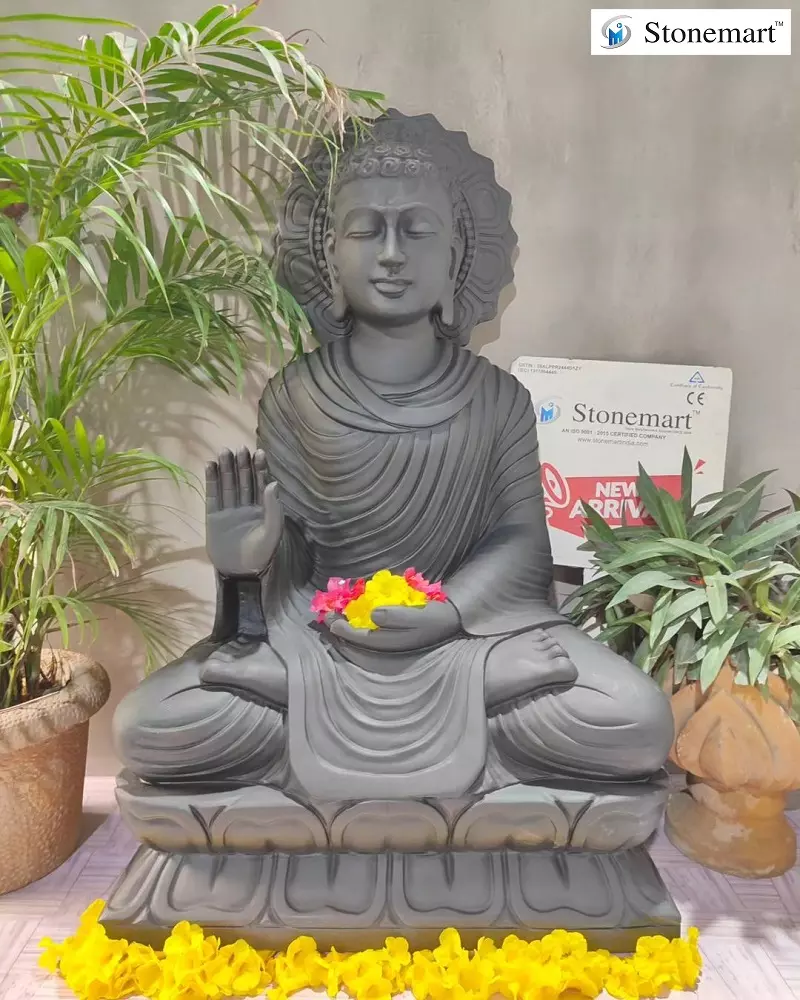
Rule #2: A Reclining Buddha Statue Should Face West
As per the Buddhist scriptures, a reclining or a sleeping Buddha statue is deemed as a poignant one; as it depicts as the final moments of the Buddha in his mortal life prior to his achievement of Nirvana and emancipation from the cycle of death and rebirth. But the statue of the Buddha in this mudra is not a symbol of gloom, it is meant to induce the encouragement to the people to discover internal harmony. Keep the sculpture facing westwards and should recline to the right.
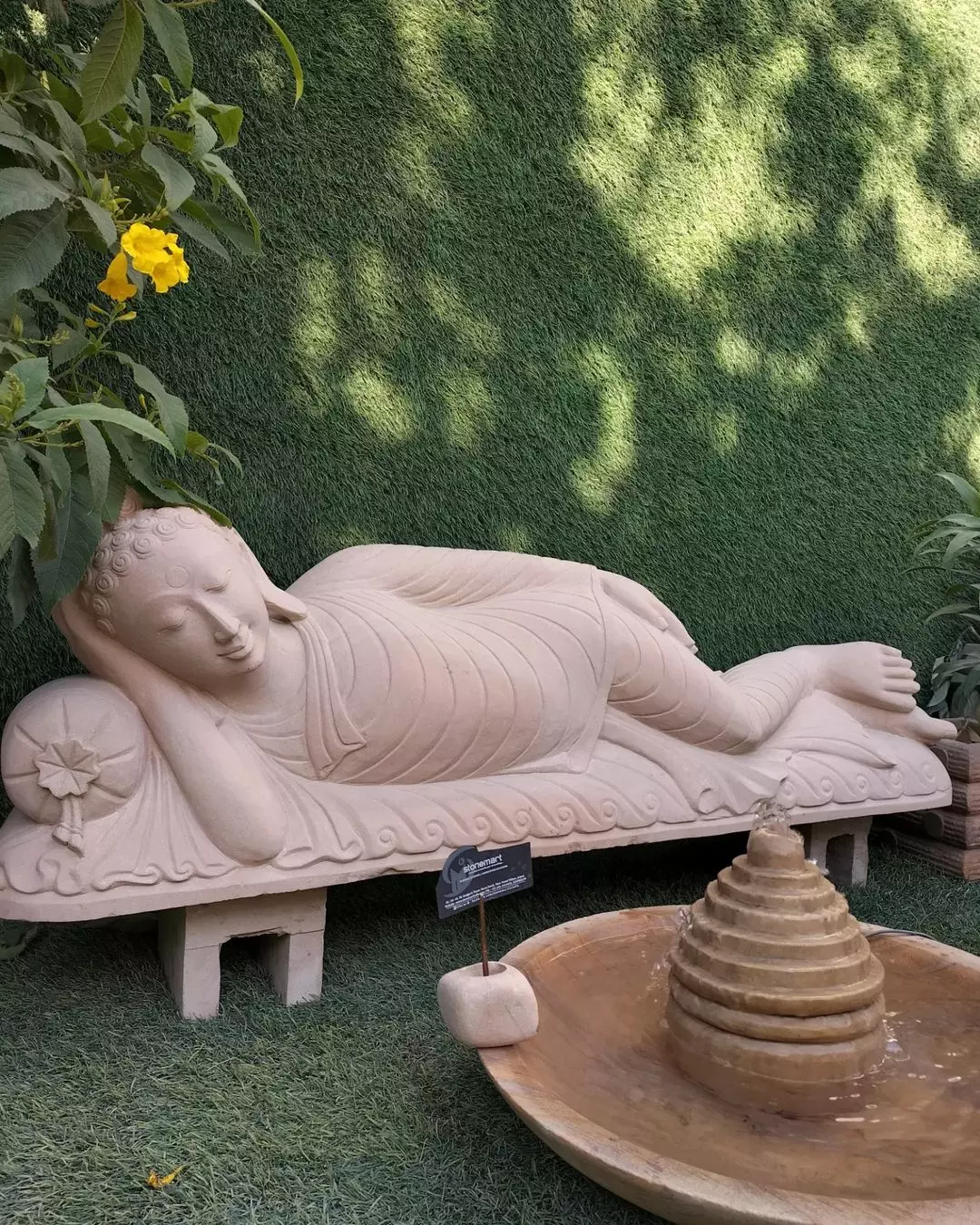
Rule #3: Keep Meditating Buddha Statue at the Alter
A meditating or dhyana mudra Buddha sculpture is meant to seek the inner peace. It is a posture of meditation with the Buddha sitting with his legs folded, face up, eyes closed, and keeping the hands lying on the lap. Small size Buddha statues can be placed upon a console table and big Buddha statues can be placed in a quiet corner, especially in your meditation room or puja room, and create a decorum by lighting incense sticks and candles to generate an aura of serenity.
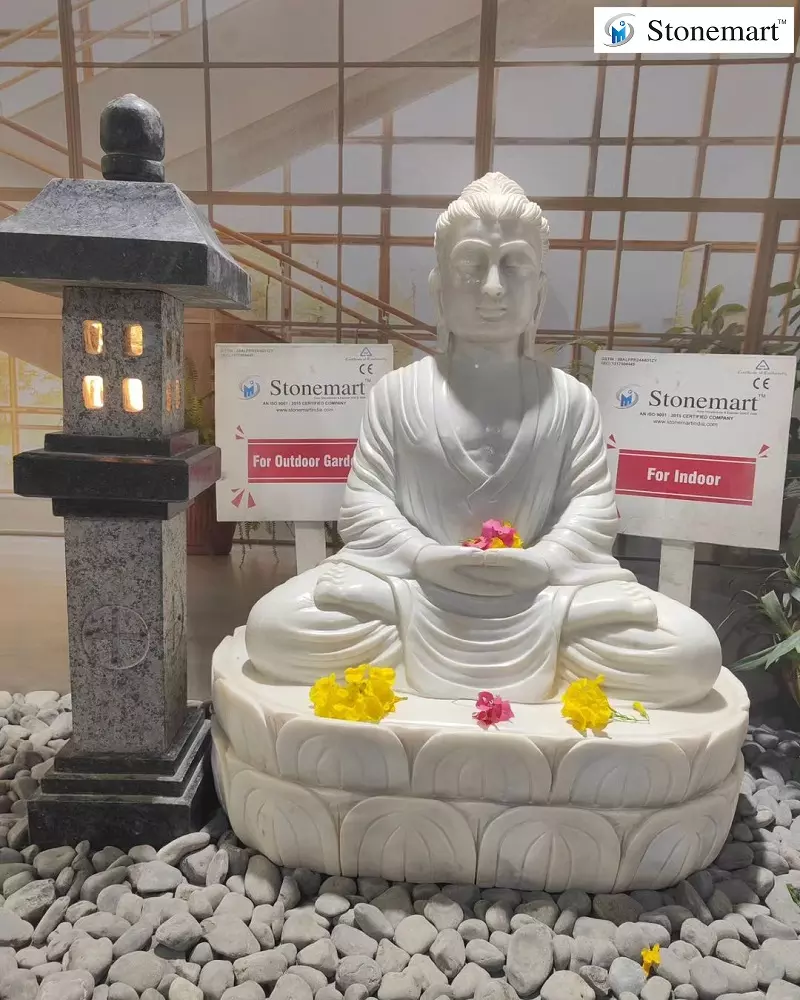
MUST READ: Best Tips Before Buying Buddha Statue for Home
Rule #4: Bhumisparsha Mudra Buddha Facing East
One of the most symbolic and popular mudras of the Buddha representing his moment of enlightenment. Gautam Buddha had been meditating for years under a pipal tree at Gaya when the demon king Mara tried to tempt and scare him. The Buddha eventually overcame the temptation and touched the ground with the fingers of his right hand to summon Bhudevi (the Earth goddess) to witness his enlightenment. The statue is the symbol of making the right choice, represents eternal knowledge and marks a new beginning. Keep the idol facing eastwards from where the Sun rises.
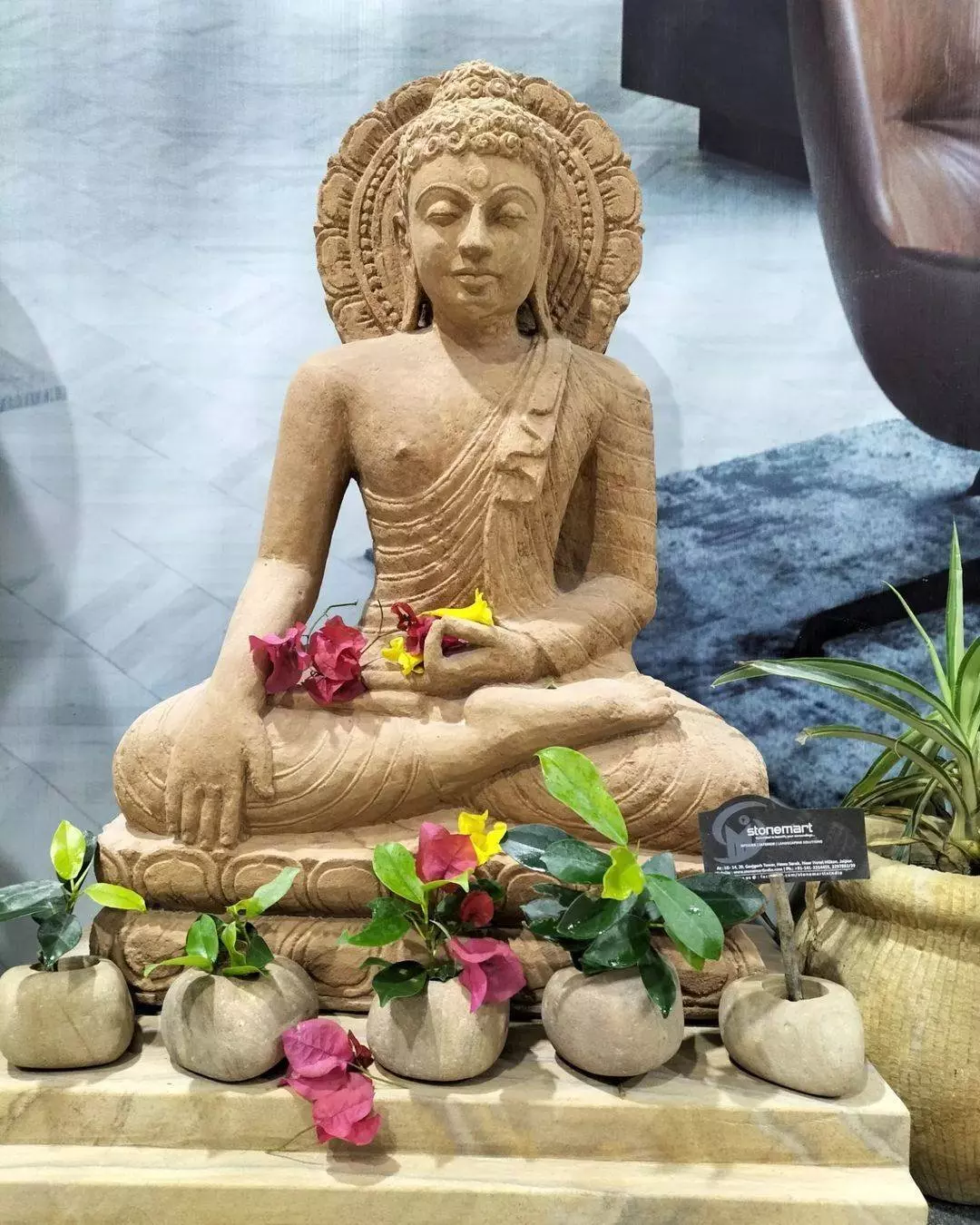
Rule #5: Placing a Praying Buddha Statue at Home
A Buddha sculpture with hands folded in prayer is a mark of devotion and faith. Also known as Anjali Mudra Buddha statue, it is perfect for your alter or pooja room. You can light a candle or a lamp around the praying Buddha statue, as it helps the energy of fire to perfectly sync with the positive energy emanating from the idol. Placing it above the eye level, especially on a console table or a rock is deemed as a respectful gesture.
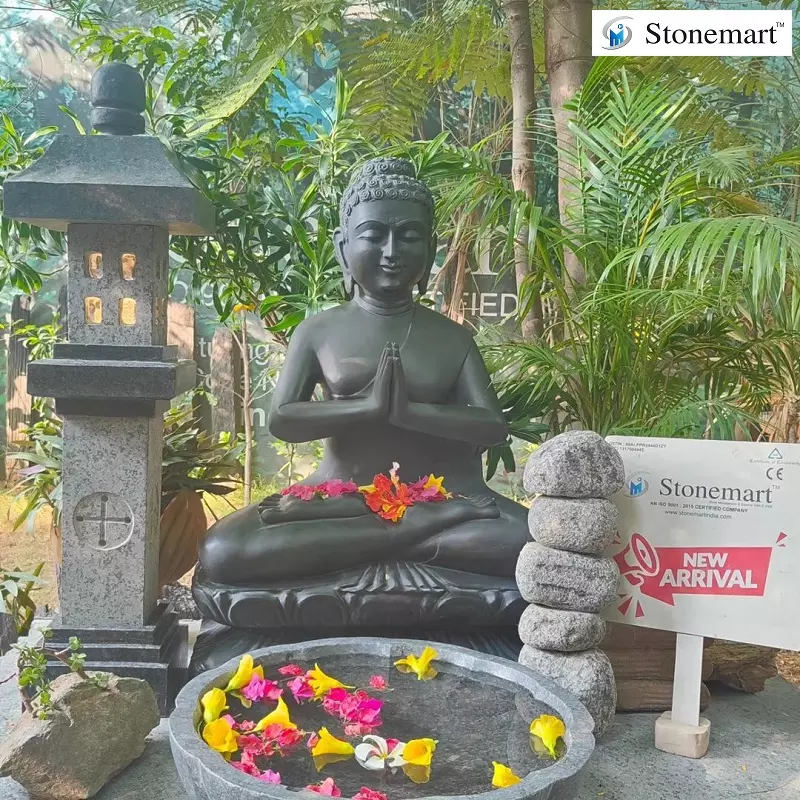
Rule #6: The Placement of Buddha Statues in the Garden
Our garden, backyard or balcony can also be a perfect location for the placement of the Buddha statue, especially when it comes to an outdoor space. How to choose a Buddha statue for home and garden? Well, we recommend to go for a Buddha fountain to perfectly blend a natural stone sculpture of the Buddha with a water fountain. One can get a range of choices in Buddha sculpture fountains, including sandstone Buddha fountains, granite Buddha fountains, black marble Buddha fountains, white marble Buddha fountains, etc.
The flowing water of the fountain is the indication of the flow of wealth, goodwill and prosperity. It is recommended to keep the mouth of the flowing water of the Buddha fountain towards your house or commercial establishment to symbolise the flow of goodwill and fortune inside your vicinity. Never keep the fountain mouth in the opposite direction.
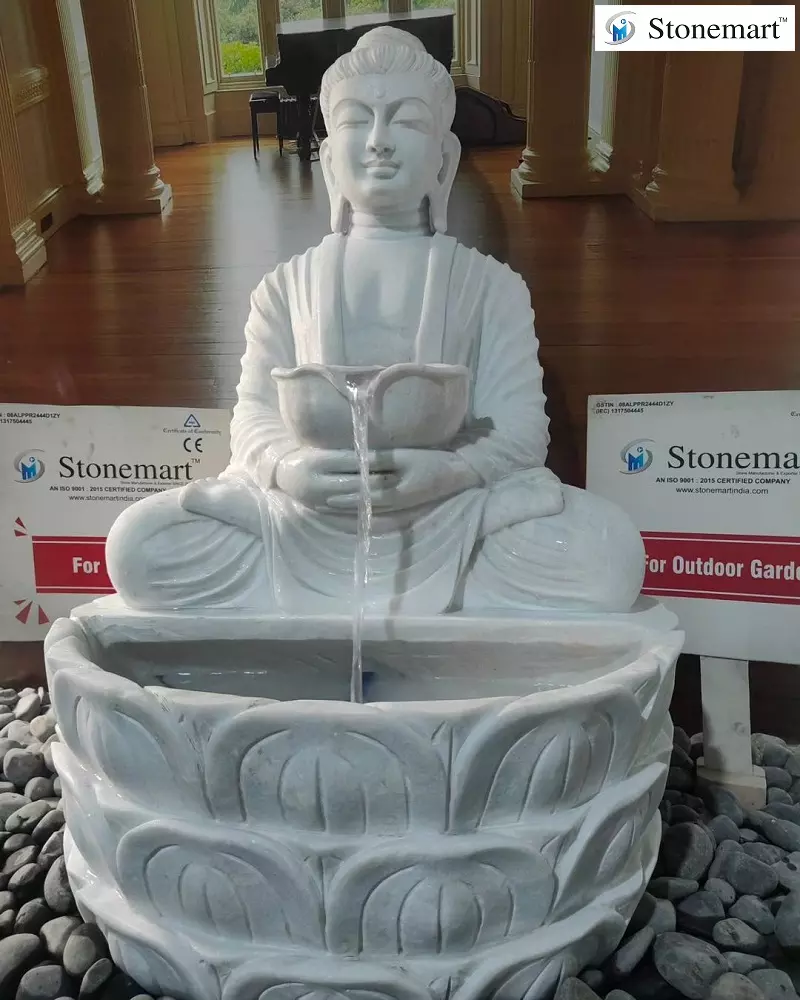
MUST READ: Harmonize your Home and Garden with 7 Lucky Vastu Placements of Buddha Statues
Rule #7: Buddha Bust for Contemporary Home Decor
Stone head of the Buddha is not traditionally a pose, rather associated with the historical significance of the life of Gautama Buddha. It is gaining the momentum of popularity in an art form, but also defining its worth as a symbol of Buddha’s knowledge. The stone Buddha face does not abide by strict rules of placement, but what is suggestive is the fact that it should never be placed in the areas with challenging energy like laundry rooms, storerooms, lavatory or upon the floor. As Buddha head bust is associated with wisdom, enlightenment and knowledge, its placement upon a console table in the living room or study table of the children is a placement idea worth consideration.
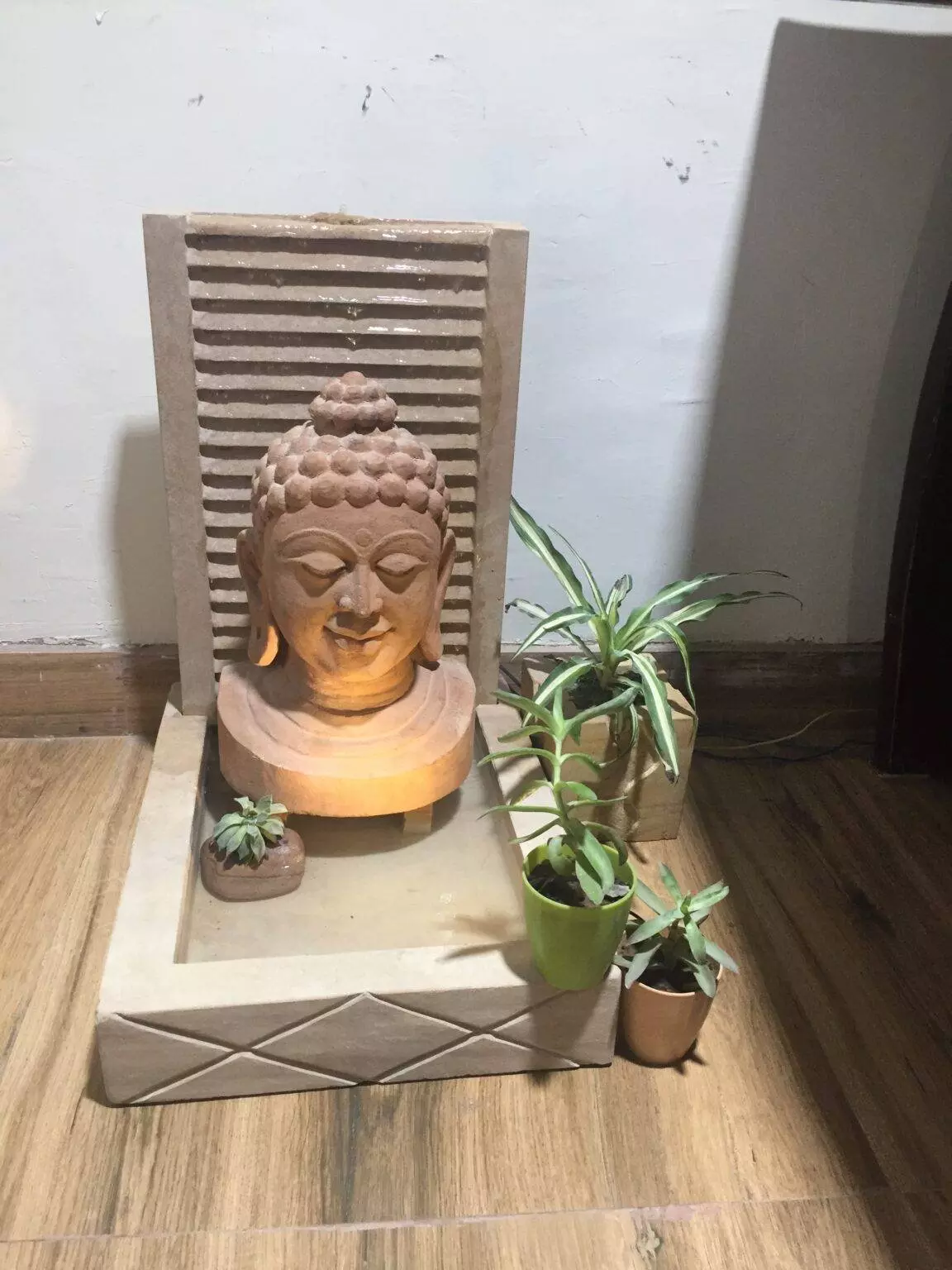
The selection of the right Buddha idol for home required to follow certain rules in order to eliminate Vastu Dosha and channelize an uninterrupted flow of positive energies. So, always place the Buddha in correct mudra at the designated spot only. The purity of the Buddha statue is equally important, so always deal with a manufacturer and exporter that offers products in 100% genuine natural stones.
